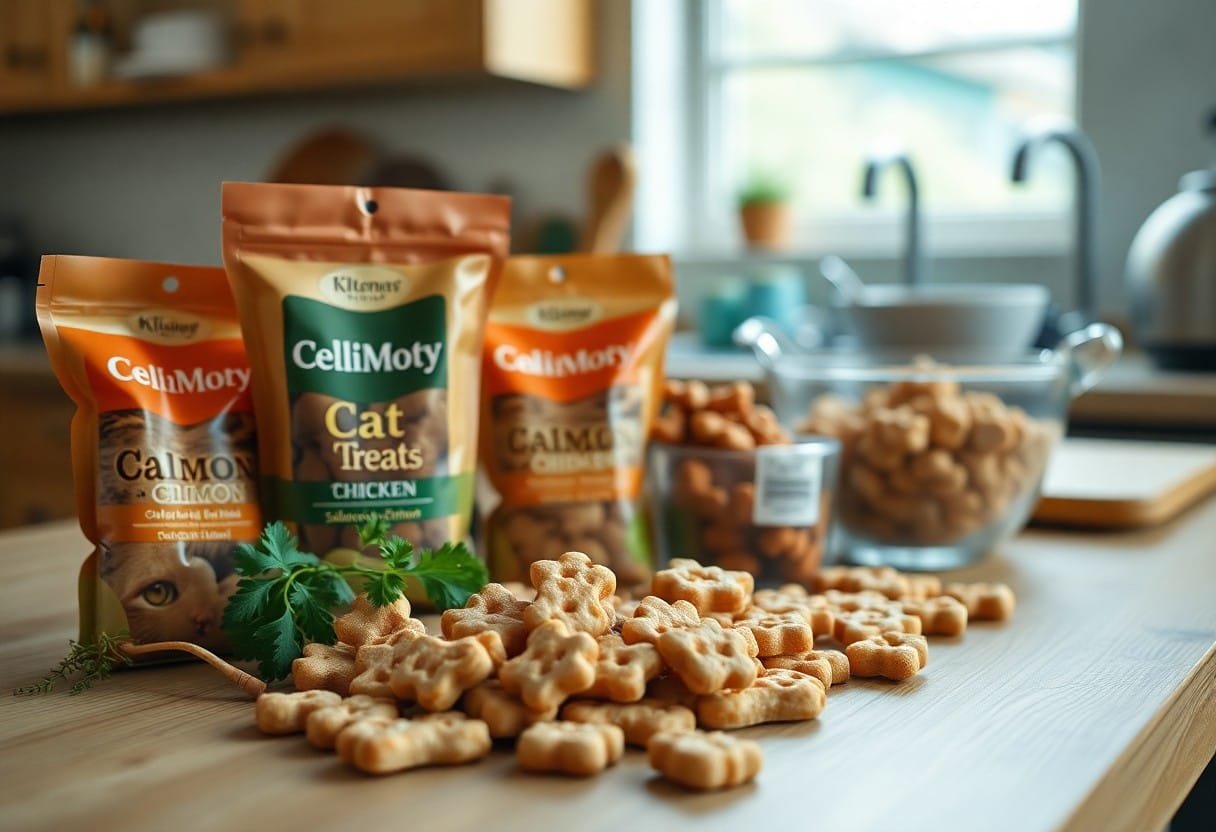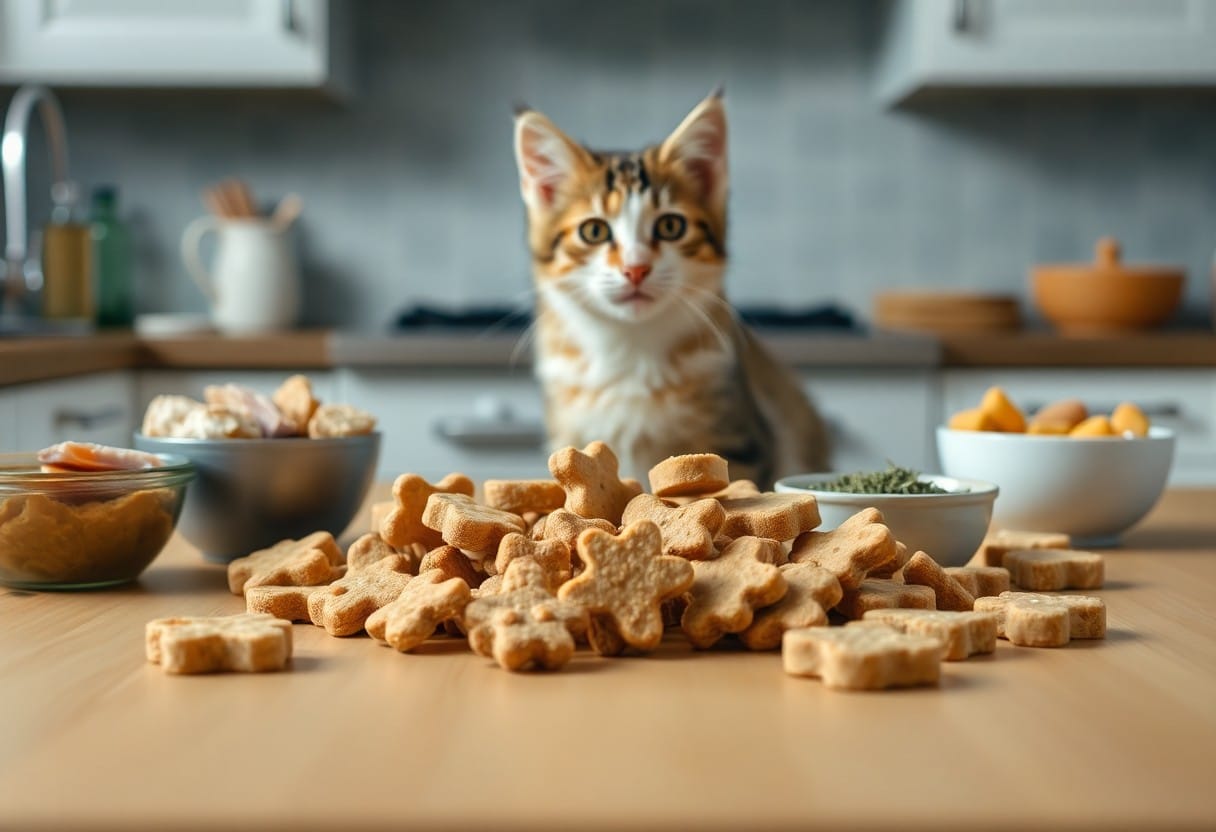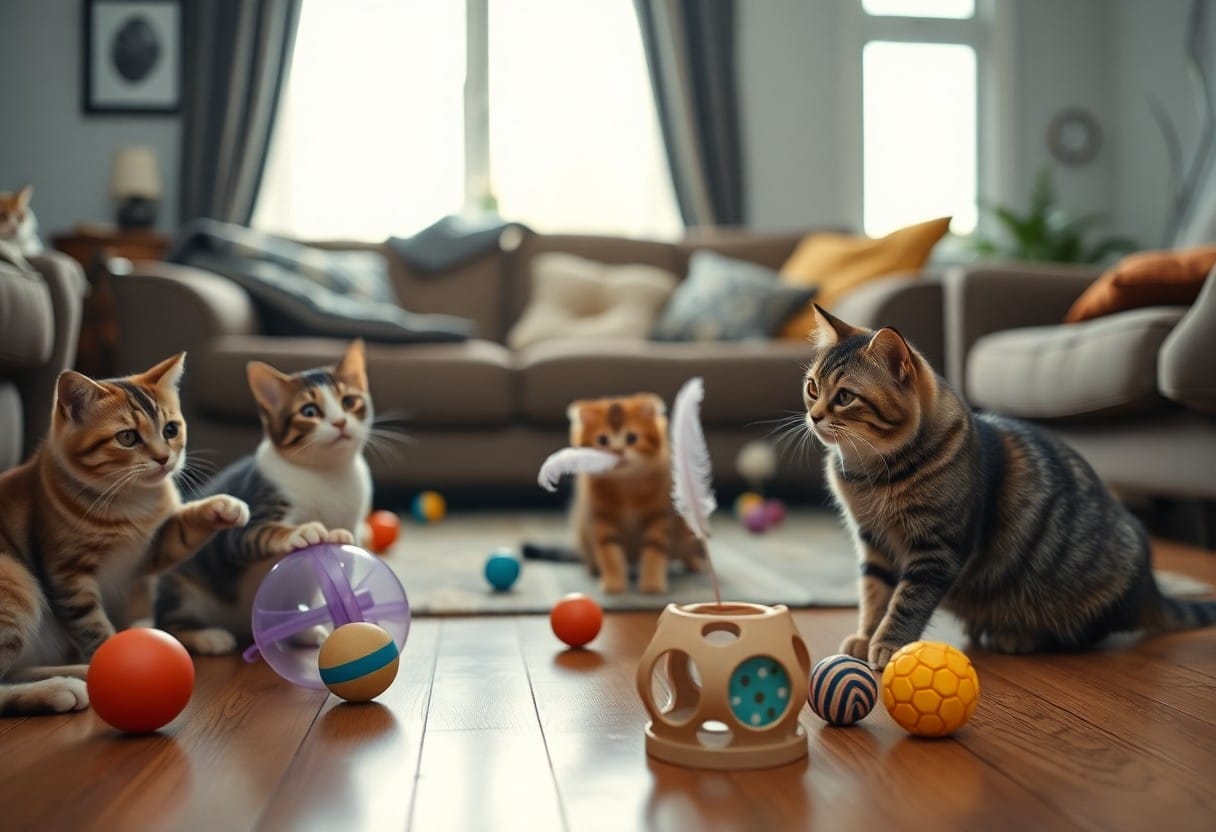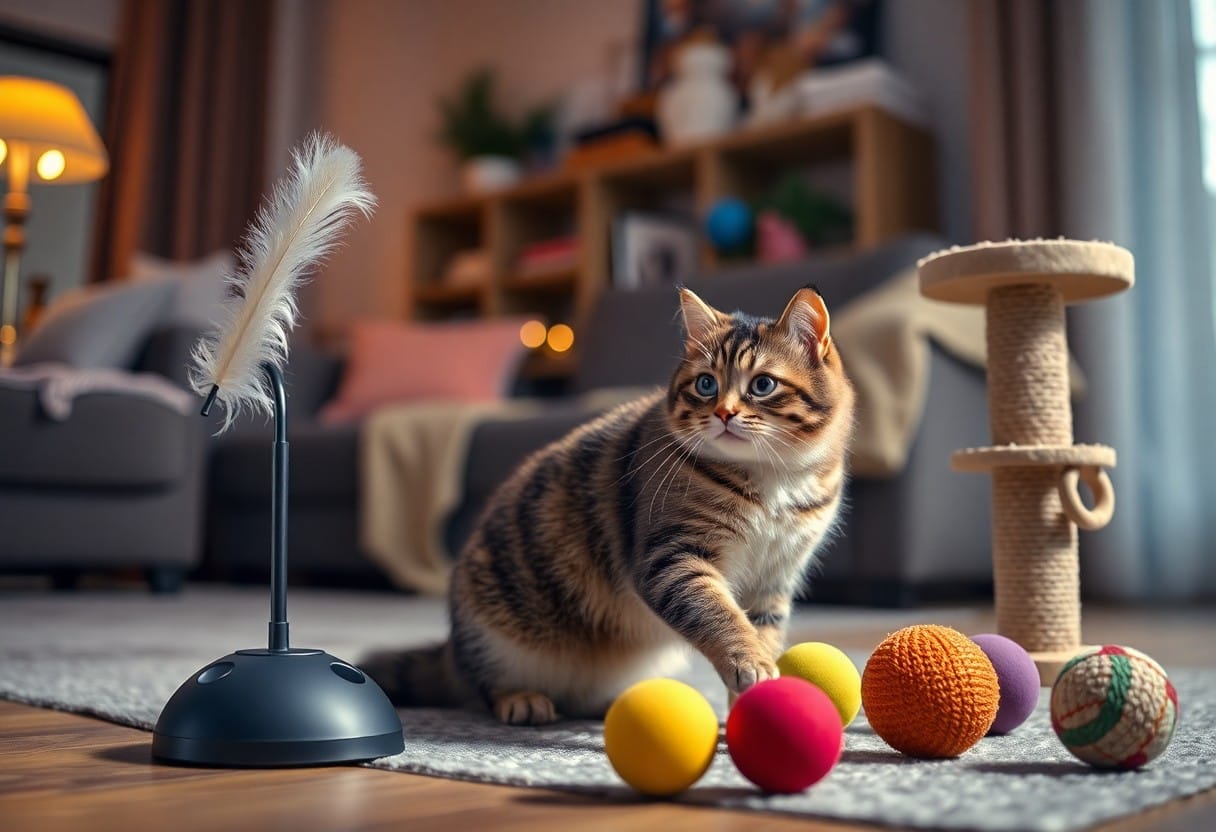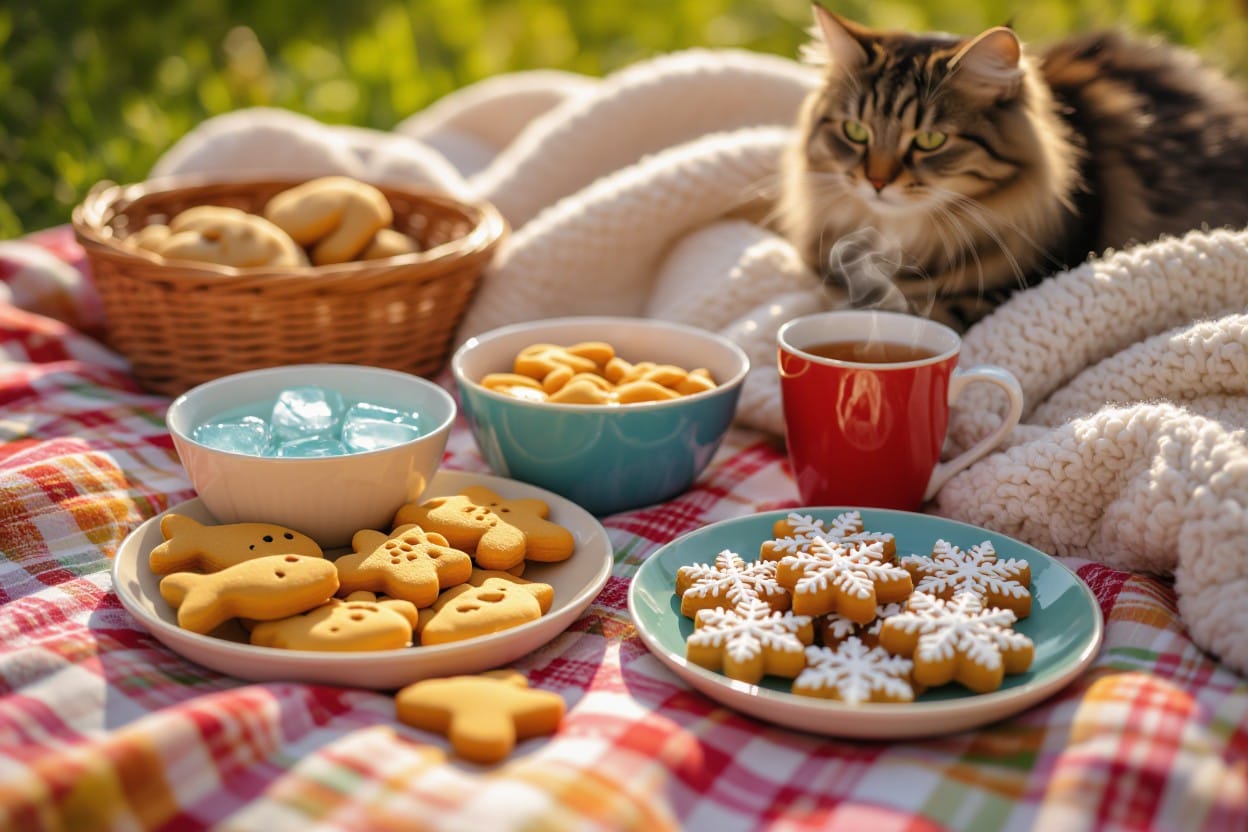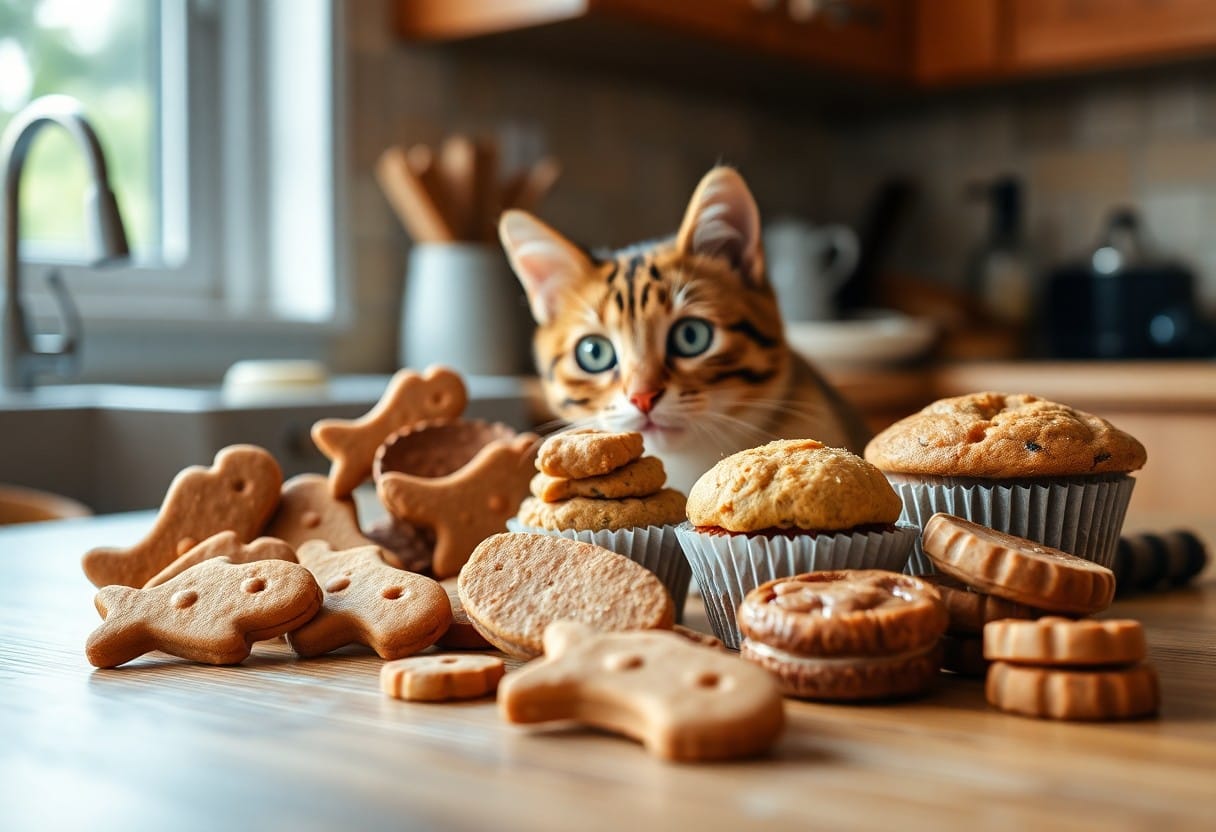With a growing awareness of pet nutrition, you may want to ensure that the treats you create for your cat are not only delicious but also nutritionally balanced. Tailoring treats specifically to your cat’s unique dietary needs can enhance their overall health while satisfying their taste buds. In this post, you will discover important tips and recipes that emphasize high-quality ingredients, avoiding harmful additives, and creating flavors that your feline friend will love. It’s time to treat your cat to something special that nourishes them, making every snack a delightful experience!
Key Takeaways:
- Focus on using high-quality ingredients that are safe and nutritious for your cat, such as protein-rich meats and wholesome grains, to create balanced treats.
- Incorporate crucial nutrients and vitamins, such as taurine and omega fatty acids, to support your cat’s overall health and well-being.
- Pay attention to portion sizes and frequency of treats to maintain your cat’s healthy weight, ensuring treats are given as an occasional reward rather than a regular part of their diet.
Tailoring Nutritional Needs: The Dietary Science of Feline Health
Your cat’s diet should be tailored to meet its unique nutritional requirements. Factors such as age, weight, breed, and activity level play a significant role in determining what your cat needs. Protein is imperative, as cats are obligate carnivores requiring high-quality animal protein for muscle development and energy. Additionally, the right balance of fats and carbohydrates, along with imperative vitamins and minerals, is vital to support their overall health and wellbeing.
Understanding a Cat’s Essential Nutrients
A balanced diet for your cat includes imperative nutrients such as proteins, fats, vitamins, and minerals. Proteins derive mainly from meat sources and are crucial for maintaining strong muscles. Healthy fats provide energy and support skin and coat health, while vitamins and minerals assist in various body functions, including the immune system and bone health. Ensuring your cat receives these imperative nutrients in the right proportions can enhance their quality of life.
Common Dietary Shortcomings in Store-Bought Treats
Many store-bought cat treats fall short in delivering optimal nutrition. Often, they are high in artificial ingredients, fillers, and low-quality proteins that can detract from your cat’s health. These treats may lack imperative nutrients, with some lacking adequate protein or key vitamins and minerals necessary for your cat’s wellbeing. Additionally, high carbohydrate content can lead to weight gain and related health issues.
While convenience may attract you to store-bought treats, scrutinizing ingredient labels reveals alarming dietary shortcomings. For instance, a treat might list corn or soy as a primary ingredient, which provides little nutritional value for a carnivorous animal. Moreover, many commercially available options contain unhealthy additives and preservatives that could contribute to long-term health problems. Diets overly reliant on these treats can result in deficiencies in vital nutrients and can lead to obesity, diabetes, and other health complications. By opting for homemade treats with carefully selected, high-quality ingredients, you can ensure that your cat enjoys a delicious and beneficial snack that supports their health and vitality.
Ingredient Spotlight: Unveiling the Best Components
Choosing the right ingredients is key to creating treats that are both delicious and nutritionally beneficial. High-quality proteins such as chicken, turkey, or fish should feature prominently, as they provide crucial amino acids that support your cat’s overall health. Additionally, consider incorporating whole grains, vegetables, and carefully selected supplements to enhance nutrient profiles. Always prioritize natural, minimally processed components to offer your feline friend a taste experience that is both savory and wholesome.
Superfoods Your Cat Will Love
Incorporating superfoods into your cat’s treats can significantly boost their health. Ingredients such as blueberries, rich in antioxidants, and pumpkin, known for its digestive benefits, provide extra nutrients that can enhance your cat’s vitality. Adding salmon oil can promote a healthy coat, while coconut flour offers a grain-free source of fiber that can aid digestion. These superfoods not only add flavor but also contribute to your cat’s long-term well-being.
Safe and Healthy Additives for Flavorful Treats
To elevate the taste of your homemade cat treats, consider safe and healthy additives. Ingredients like catnip can be enticing and stimulate playful behavior, while turmeric offers anti-inflammatory properties. Adding a small amount of cheddar cheese can enhance flavor without overloading on calories. Organic broth can be used to improve overall palatability, ensuring your cat will be excited for treat time while receiving nutritional benefits.
Turmeric, in particular, contains curcumin, which has been shown to have anti-inflammatory and antioxidant effects. Just a pinch can provide your cat with a healthy twist that reinforces their immune system. On the other hand, a sprinkle of catnip not only gratifies their palate but also provides mental engagement, making treat time a delightful experience. Using these safe additives allows you to create diverse and appetizing treats that cater to your cat’s cravings while still nourishing their bodies.
DIY Delight: Crafting Homemade Cat Treats
Crafting homemade cat treats allows you to control the ingredients and tailor the flavors to your feline’s preferences. By using wholesome, natural ingredients, you’re not just creating enticing snacks but also ensuring they are nutritious. Enjoy the satisfaction of measuring, mixing, and baking, all while bonding with your pet. Homemade treats can be the perfect way to show your love while keeping them healthy and energetic.
Simple Recipes to Try at Home
Whip up quick and easy recipes like tuna cakes or chicken bites. Combine one can of tuna (in water) with a cup of whole wheat flour and an egg. Form small balls and bake at 350°F for about 10-12 minutes. Alternatively, blend cooked chicken with pumpkin puree to make soft, chewy treats. Your cat will love the flavor, and you’ll appreciate knowing exactly what’s in their snacks!
Tips for Presentation and Storage
Presentation can elevate your homemade treat game. Use cute containers or treat bags adorned with ribbons for a delightful gift. Store your homemade treats in airtight containers in a cool, dry place to maintain freshness. Additionally, freezing extras can prolong their shelf life; simply thaw before serving. This way, your cat can enjoy a tasty, nutritious snack whenever they please!
- Airtight containers help maintain freshness.
- Freezing extras can prolong shelf life.
- Presentation enhances the treat-giving experience.
- This ensures your cat enjoys delightful, nutritious treats anytime!
For optimal presentation, consider using a variety of containers, from glass jars to colorful bags, personalized with labels. You might even bake a batch for a special occasion, wrapping them neatly to share with fellow cat lovers. Always prioritize storage methods that keep treats fresh and flavorful. Experimenting with seasonal flavors can add excitement for both you and your cat. This guarantees that treat time feels special, every single day!
- Colorful bags can attract attention.
- Baking for occasions adds a personal touch.
- Seasonal flavors keep things exciting for your cat.
- This ensures treat time feels extraordinary every day!
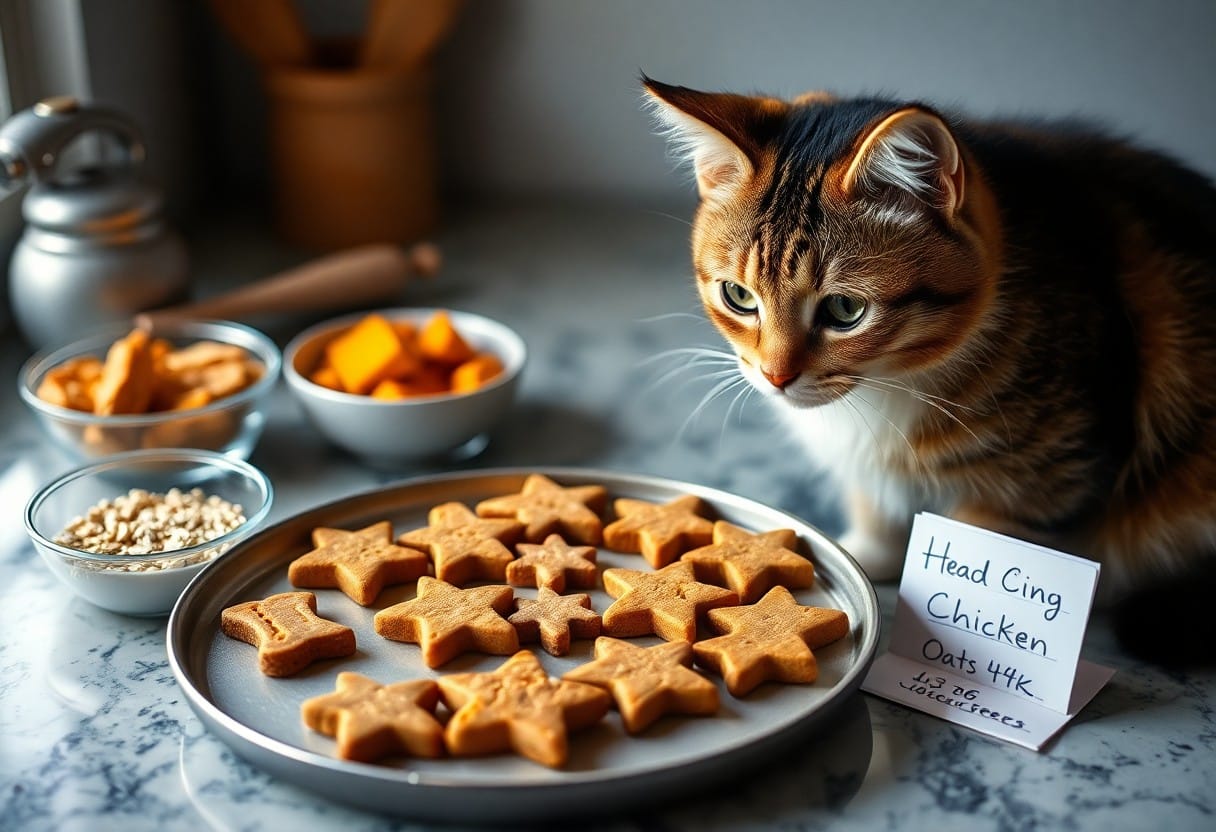
Testing Taste Buds: The Importance of Trial and Error
Engaging in trial and error is fundamental to discovering the flavors your cat enjoys the most. Start by introducing new ingredients gradually and observing your cat’s reaction. Pay attention to tail wags, excited meows, or even rejection, as these all provide valuable feedback. Don’t be discouraged by initial failures; this process helps refine your recipes, ensuring you craft those delightful bites that your furry friend can’t resist.
How to Gauge Your Cat’s Preferences
Offering a variety of flavors and textures is key to understanding your cat’s taste buds. Start with small portions of different treats and monitor your cat’s reactions. Do they favor crunchy over chewy? React enthusiastically to fish flavors while ignoring poultry? Keep a note of patterns to refine your selections over time.
Adapting Recipes Based on Feedback
Listening to your cat’s responses can drastically improve your treat-making skills. If certain ingredients are well received while others are left untouched, adjust accordingly. For instance, if your cat loves treats made with tuna but snubs chicken, consider substituting chicken with a different seafood option or blending both for a successful mix. Testing variations and keeping track of preferences allows for a more tailored approach, ensuring your feline remains excited about treat time.
Adapting recipes based on feedback doesn’t just enhance flavor—it also strengthens your bond with your cat. Each trial serves as a learning opportunity, allowing you to hone in on specific tastes and dietary needs. You might discover that adding a sprinkling of catnip enhances the appeal or that a touch of pureed pumpkin adds nutrition without sacrificing flavor. Stay flexible, take notes, and adjust as necessary; this will not only lead to delectable treats but also show your furry friend that you pay attention to their whims and desires.
Balancing Treats with Daily Nutrition
Creating a harmonious balance between treats and daily nutrition is crucial for your cat’s overall health. Treats should complement their main meals rather than substitute for them, ensuring that your feline receives a complete diet rich in crucial nutrients. Aim for treats to make up no more than 10% of their daily caloric intake to maintain an appropriate weight and prevent nutrient deficiencies. By considering their daily meals, you can integrate these delightful goodies while keeping their nutritional needs in check.
Integrating Treats into a Cat’s Overall Diet
To effectively integrate treats into your cat’s diet, consider their daily feeding schedule and portion sizes. Opt for smaller portions of treats that align with the nutritional profile of their regular meals. For example, if your cat enjoys fish-flavored treats, pair them with a high-quality protein-based diet so they still receive omega fatty acids and crucial amino acids. By doing so, you create a balanced approach that nourishes while satisfying their taste buds.
Recognizing and Avoiding Overindulgence
Identifying signs of overindulgence in your cat is key to maintaining their health. Monitor their weight regularly and keep an eye out for behavioral changes like reluctance to play or increased lethargy. Integrating more playtime and interactive feeding can help reduce the desire for excessive treats while promoting a balanced lifestyle. Reducing treat frequency or incorporating lower-calorie options during training can also alleviate health-related concerns. Establishing routine check-ups with your veterinarian can provide insights into maintaining an optimal balance tailored to your cat’s current health needs.
Understanding the significant risks of overindulging in treats is crucial for your cat’s long-term health. Cats are prone to obesity, which can lead to serious conditions such as diabetes or joint issues. By keeping a close eye on their body condition score, you can prevent excessive weight gain. Offering praise and affection during training instead of relying solely on treats can help rewire your cat’s behavior without compromising their health. Adopting a mindful approach ensures they enjoy their treats responsibly, allowing you to nurture them while supporting their well-being.
To wrap up
The journey to creating purr-fectly balanced treats for your cat involves understanding their nutritional needs, sourcing high-quality ingredients, and experimenting with flavors your feline loves. By prioritizing a mix of proteins, healthy fats, and crucial vitamins, you can craft snacks that not only appeal to their taste buds but also support their overall health. Incorporating moderate portions and keeping treats diverse can ensure your kitty stays excited and engaged during treat time. With these tips, you’ll be well on your way to delighting and nourishing your beloved companion.
Q: What ingredients should I consider when creating healthy treats for my cat?
A: When crafting balanced treats for your cat, focus on high-quality protein sources such as chicken, turkey, or fish. Incorporate healthy fats like fish oil or chicken fat, which can support a shiny coat. Adding fiber-rich ingredients like pumpkin or sweet potatoes can aid digestion. Always ensure any fruits or vegetables included, such as blueberries or spinach, are safe for cats. Additionally, avoid ingredients that are toxic to cats, such as onions, garlic, and chocolate.
Q: How can I ensure the treats are nutritionally balanced?
A: To achieve nutritional balance in cat treats, consider consulting with a veterinarian or a pet nutritionist. Various recipes can be evaluated for their macronutrient ratios—proteins, fats, and carbohydrates. Keep proteins as the main ingredient, ensure a moderate amount of healthy fats, and limit carbohydrates. When formulating treats, be mindful of calorie counts and adjust portion sizes accordingly to prevent overfeeding. Including vitamins and minerals, either through supplements or naturally sourced ingredients, can also help meet your cat’s dietary needs.
Q: What are some methods for preparing and storing homemade cat treats?
A: You can prepare homemade cat treats through baking, dehydrating, or even pan-frying, depending on the recipe. Baking is a popular method, as it can enhance flavors while making treats crispier for a great texture. Once your treats are created, store them in an airtight container to maintain freshness and flavor. For longer shelf life, some treats can be refrigerated or frozen, ensuring they remain safe and enjoyable for your feline friend. Label the containers with the date to keep track of freshness.
